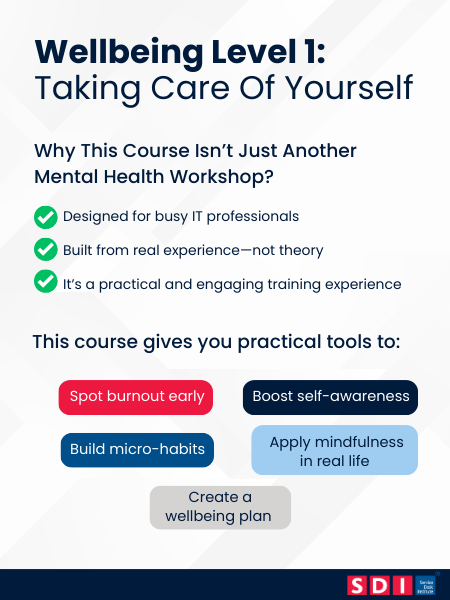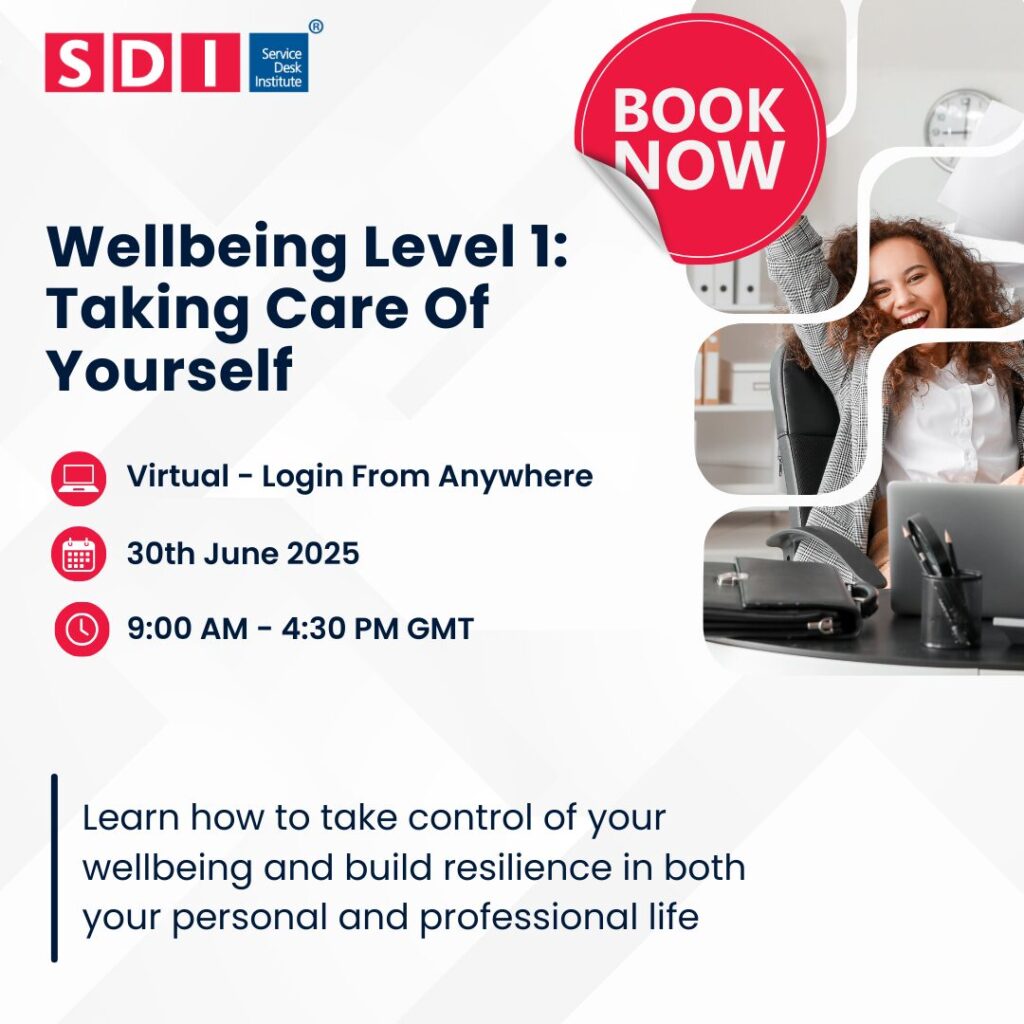 Back to Resources
Back to Resources
Why burnout isn’t inevitable, and how the right training can help IT professionals build lasting resilience. Let’s start with the obvious: working in IT isn’t really a stroll through the user manual.
There’s the constant juggling act between tickets, updates, user demands, never-ending Zoom calls, and, if you’re really lucky, a spontaneous 3 a.m. server crisis. Sound familiar?
It’s a very dynamic industry, and while technology keeps evolving at breakneck speed, our human systems, our minds and bodies, haven’t. And they can’t be upgraded overnight… at least for now.
That’s where employee wellbeing comes in.
Burnout Isn’t a Badge of Honour
In many IT cultures, there’s a silent narrative that exhaustion equals excellence. Long hours, quick fixes, and always being available are often mistaken for dedication. But here’s the truth: Resilience doesn’t mean pushing through until you crash. Resilience means building habits and awareness that keep you performing sustainably, with clarity and purpose.
According to a 2021 Harvard Business Review report, 89% of employees said their work life had worsened, with burnout, isolation, and anxiety all on the rise. IT professionals were among the most affected, citing increased workloads, blurred work-life boundaries, and reduced time for recovery.
The cost? Burnout, absenteeism, presenteeism, and a drop in productivity and morale. Now, what if there were a way to not just survive, but actually thrive, in this high-demand environment?
SAP’s Example: Employee Wellbeing as a Business Strategy
Take SAP, one of the largest enterprise software companies in the world. In 2013, they introduced a bold initiative: integrating wellbeing as a core business strategy. They launched the Health Culture Index, a system that tracks employees’ perception of how much their company supports their health and wellbeing.
The results?
For every 1% increase in the Health Culture Index, SAP saw a 1% increase in employee engagement, and a 0.4% rise in operating margin. That’s not just a wellness win. That’s a business win. It’s a powerful reminder that investing in people’s wellbeing isn’t a perk, it’s a performance strategy.
Introducing: Wellbeing Level 1 – Taking Care of Yourself
So, what does that mean for you and your team?
That’s exactly what this course is about. Wellbeing Level 1: Taking Care of Yourself is designed specifically with busy IT professionals in mind. It’s a practical, engaging, and (dare I say?) enjoyable training experience that meets people where they are, usually somewhere between stressed and I-don’t-have-time-for-this… I know your plate’s full. That’s exactly why this course matters. Because you can’t afford not to.

This course gives you practical tools to:
– Spot burnout early – so you can act before you hit the wall
– Boost self-awareness – with tools from emotional intelligence training
– Build micro-habits – that support energy, focus, and balance
– Apply mindfulness in real life – not just on a meditation app
– Create a wellbeing plan – that actually works for your day-to-day
Why This Course Isn’t Just Another Mental Health Workshop
Let’s face it, many mental health trainings still feel like tick-box exercises. They tell you what burnout is, but don’t show you how to prevent it. They talk about self-care but skip over the reality of being time-poor and stretched thin.
This course is different because it was designed by someone who’s lived it, been through burnout, worked through it, and returned stronger. It’s grounded in real experience, not just theory.
It’s not about adding another task to your plate, it’s about making the plate lighter.
The Ripple Effect
There’s something quietly revolutionary about a team that’s grounded, emotionally intelligent, and able to navigate pressure with clarity. Wellbeing isn’t just personal—it’s communicable. When one person starts modelling resilience, others follow. And slowly, culture shifts.
When people feel seen, supported, and resourced, they do better work. They show up with more presence, creativity, and patience, even when the ticket queue is overflowing and someone just unplugged the server again.
You’ve Got This—And We’ve Got You
I designed this course with a single message at its core: you matter.
Your wellbeing matters. Your ability to bounce back, manage stress, and feel human in a digital world isn’t optional, it’s vital. So, if you’re ready to recharge, refocus, and take care of the one tool that powers all the rest—you—then we’re here for you.
Join us for Wellbeing Level 1: Taking Care of Yourself. Because your wellbeing isn’t a side project. It’s your greatest asset.
Author:
Leadership & Wellbeing Coach




















